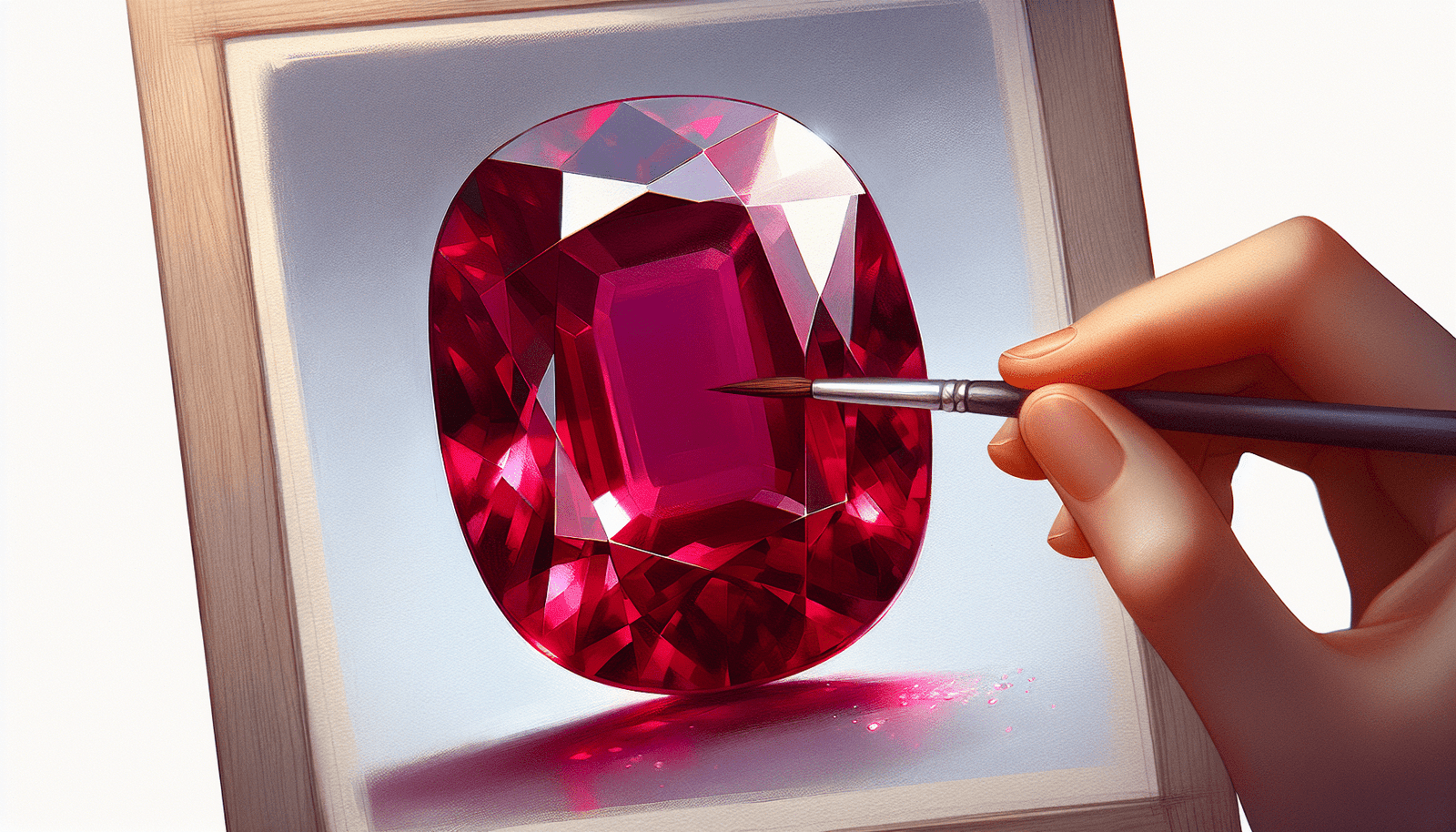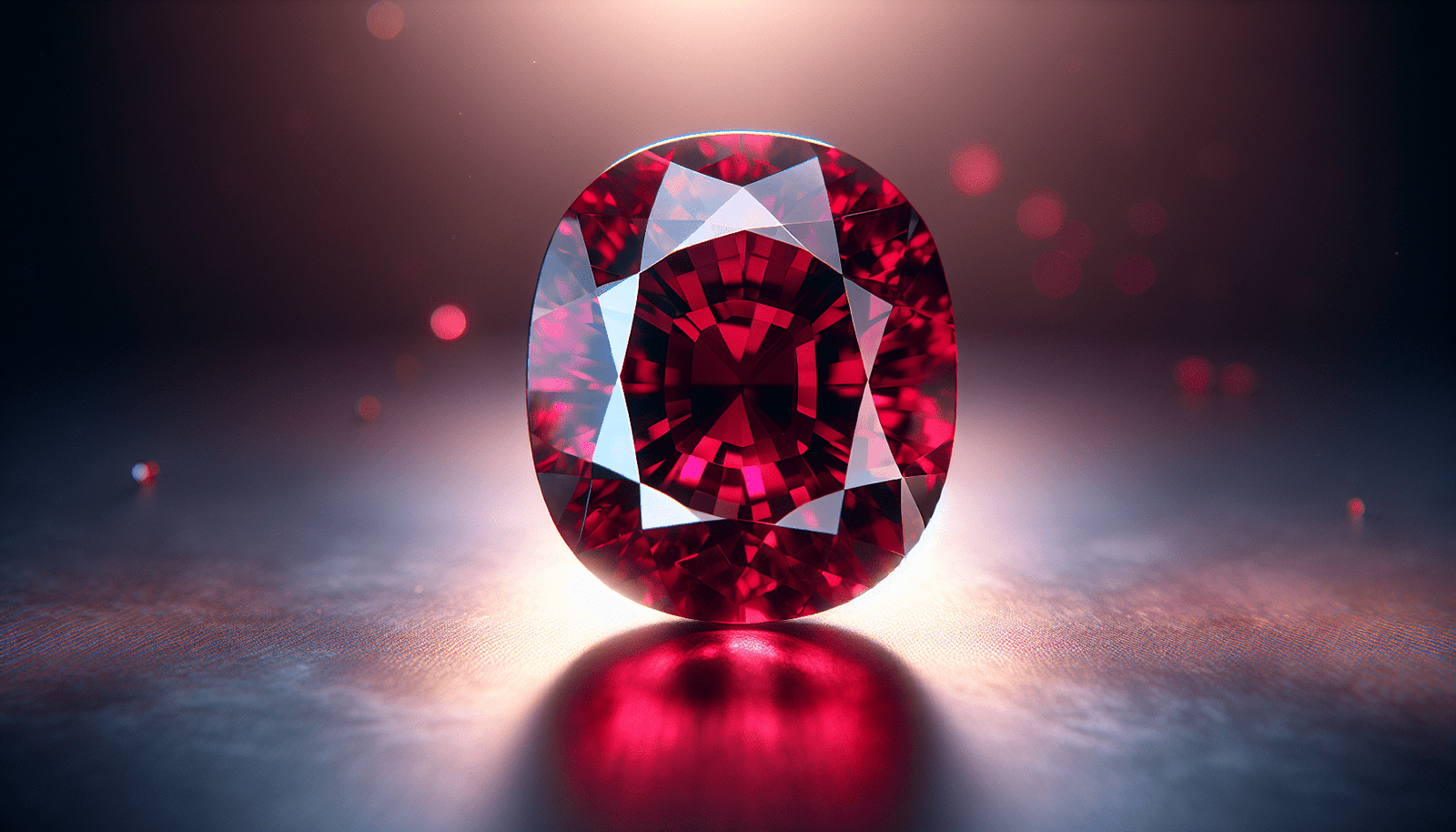What Color Ruby Is Most Valuable?
Have you ever wondered what makes one ruby more valuable than another? Rubies, with their vibrant hues and stunning appearance, have fascinated humans for centuries. But did you know that not all rubies are created equal? Some are more precious and sought-after than others, and the secret lies largely in their color.

The Allure of Rubies
Rubies have always been revered as symbols of love, passion, and power. They are one of the four precious gems, alongside diamonds, emeralds, and sapphires. The allure of a ruby is undeniable—its intense red hue is captivating, making it a favorite among gem enthusiasts and collectors alike. But what exactly makes a ruby so special?
Historical Significance
Historically, rubies have been associated with royalty and the divine. Ancient cultures believed that rubies could protect their owners from harm and bring them good fortune. In Hindu culture, they were known as the “king of gems” and thought to be the ultimate representation of the sun. Meanwhile, in ancient Burma (now Myanmar), warriors would insert rubies into their flesh before battle for protection and strength.
The Four Cs of Rubies
Much like diamonds, rubies are evaluated based on four primary criteria—often referred to as the Four Cs: Color, Clarity, Cut, and Carat weight. While all these factors are essential in determining the value of a ruby, color is the most significant.
| Criteria | Description | Importance |
|---|---|---|
| Color | The hue, tone, and saturation of the ruby | Most Critical |
| Clarity | The presence of inclusions or flaws within the ruby | Important |
| Cut | The quality of the gemstone’s cut and shape | Somewhat Important |
| Carat | The gem’s weight or size | Important for Pricing |
Let’s dive deeper into why color holds such sway over a ruby’s value.
The Significance of Color in Rubies
When it comes to rubies, not all reds are the same. The color can be influenced by several factors, including hue, tone, and saturation. Each of these elements contributes to a ruby’s overall appeal and, ultimately, its market value.
Hue
Hue refers to the actual color of the ruby, which can range from orangish-red to purplish-red. The most desirable rubies typically possess a pure, vibrant red hue. However, slight variations in hue can make a significant difference.
Tone
Tone describes the lightness or darkness of the gem. While a good ruby can range from medium to dark tone, an overly light or overly dark ruby loses its appeal and, consequently, its value. A medium to medium-dark tone is generally considered the most attractive.
Saturation
Saturation is the intensity or vividness of the color. The most valuable rubies have high color saturation, which means they exhibit an intense, rich color without appearing too dull or too vibrant.
Pigeon’s Blood Ruby
If you’ve ever heard of a “Pigeon’s Blood Ruby,” then you know this term refers to the pinnacle of ruby quality. These rubies boast a vibrant, deep red hue, almost akin to the color of a freshly-killed pigeon’s blood. This description may sound a bit macabre, but it’s this specific color quality that makes these rubies the most sought-after and most valuable in the world.
| Ruby Type | Description | Value |
|---|---|---|
| Pigeon’s Blood Ruby | Deep, pure red with high saturation and medium-dark tone | Highest |
| General Red Ruby | Variations of red with acceptable hue, tone, and saturation | High to Moderate |
| Light Red Ruby | Light red or pinkish hues | Lower |
| Dark Red Ruby | Too dark, often appearing close to black | Lower |

Origin and Its Impact on Color
A ruby’s geographical origin can also affect its color and, subsequently, its value. Some locations are known for producing rubies with exceptional color qualities.
Myanmar (Burma)
Myanmar is arguably the most famous source of high-quality rubies. The rubies mined from this region are renowned for their vibrant red hue and high saturation. The Pigeon’s Blood rubies hail mostly from Myanmar, making them some of the most expensive rubies on the market.
Thailand
Thai rubies often display darker, more burgundy shades with less saturation compared to Burmese rubies. While they are still beautiful and valuable, they don’t command the same price as their Burmese counterparts.
Sri Lanka (Ceylon)
Sri Lankan rubies are generally lighter in tone, sometimes exhibiting a pinkish-red hue. While they may not have the deep red color that some collectors seek, these rubies are still widely appreciated for their sparkle and beauty.
Mozambique
In recent years, Mozambique has emerged as a significant source of high-quality rubies. The stones from this region often exhibit a good saturation and color tone, although they can vary significantly.
Treatments and Enhancements
To improve a ruby’s appearance, several treatments and enhancements can be applied. While these can make the ruby more visually appealing, they can also affect its value.
Heat Treatment
The most common treatment is heat treatment, which improves color and clarity. While treated rubies can still be valuable, they are generally worth less than their untreated counterparts. It’s always important to ask for certification regarding any treatment a ruby may have undergone.
Glass Filling
Some rubies undergo a process known as glass filling, where lead-glass is added to fill in fractures and inclusions. This treatment significantly lowers the value of the ruby, making it more affordable but less valuable in terms of long-term investment.
Dyeing
Dyeing is another method used to enhance a ruby’s color. This practice is less common and often viewed unfavorably, as it can compromise the gem’s integrity and durability.
Certification
For those seeking the most valuable rubies, certification is crucial. Organizations such as the Gemological Institute of America (GIA) and the American Gem Trade Association (AGTA) provide certification, detailing the ruby’s characteristics, including any treatments it has undergone.

Clarity, Cut, and Carat Weight
While color is the most critical factor in determining a ruby’s value, clarity, cut, and carat weight also play vital roles.
Clarity
Clarity refers to the presence of inclusions or internal features. Unlike diamonds, inclusions in rubies are more accepted and expected. However, fewer and less visible inclusions are preferable.
Cut
The cut of a ruby affects how well it reflects light, which impacts its brilliance. A well-cut ruby will maximize the stone’s natural sparkle and hide minor flaws.
Carat Weight
Finally, the carat weight, or size, of the ruby affects its value. Larger rubies are rarer and therefore more valuable. However, if a larger ruby lacks good color or clarity, it may still be less valuable than a smaller, more vibrant ruby.
Practical Tips for Buyers
If you’re in the market for a ruby, there are several practical considerations to keep in mind. These tips will help you make an informed decision and get the best value for your investment.
Inspecting Color
Always inspect the ruby under various lighting conditions. Natural daylight usually provides the best indication of its true color. A jeweler’s loupe can also help you better see the hue, tone, and saturation.
Checking for Treatments
Ask for certification regarding any treatments the ruby may have undergone. Transparency on this matter can save you from future regret.
Setting and Design
Consider how the ruby will be set in jewelry. The setting can enhance or obstruct the stone’s natural beauty. Choose settings that complement the ruby’s color and shape.
Trusted Sellers
Purchasing from reputable sellers ensures that you receive a quality product. Look for jewelers who offer certified rubies and have good returns policies.
Conclusion: The Quest for the Perfect Ruby
Finding the most valuable ruby boils down to its color. The ideal ruby will have a vibrant, deep red hue with medium to medium-dark tone and high saturation. While Pigeon’s Blood rubies are the crème de la crème, other factors like origin, clarity, cut, and carat weight also contribute to a ruby’s value.
Your quest for the perfect ruby shouldn’t be taken lightly. Do your research, consult experts, and always make informed decisions. In the end, whether you are buying a ruby as an investment or as a stunning piece of jewelry, finding that flawless stone will be worth every effort. So, keep these tips in mind, and you’ll be well on your way to acquiring a truly valuable gem.



